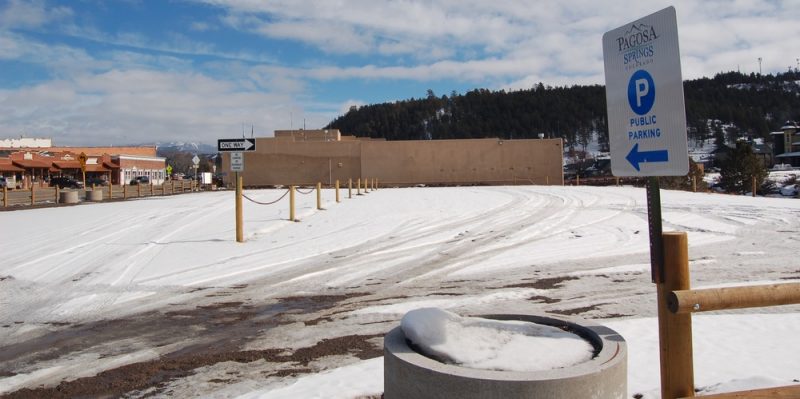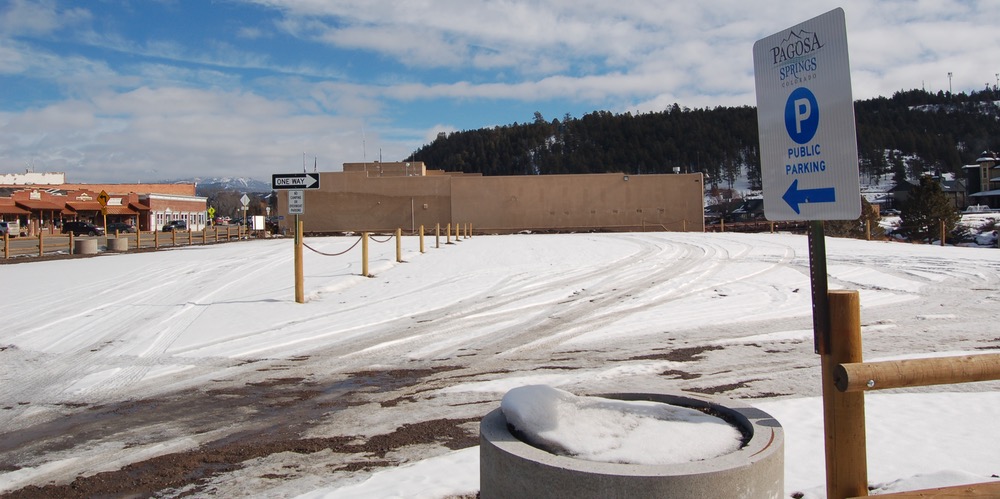I promised I would write something about parking, in this installment, but we have to get there first.
A reader contacted me yesterday after reading about the seven “Catalytic Projects” mentioned in the Town of Pagosa Springs’ 2017 Comprehensive Plan.
“Didn’t you mean to say, ‘Catatonic’?”
The reader also suggested, with a bit more seriousness, that government-initiated development is more likely to fail than “organic” entrepreneur-initiated projects. That might be true… except for the fact that a government can continue pouring taxpayer money into a project, long after it has failed. But be that as it may, I want to dig a bit more deeply into the Number One “Catalytic Project” mentioned on page 83 of the Comprehensive Plan (which you can download here)…
…A potential joint development project that could include the vacant, three-quarter-acre Adobe Building parcel on Lewis Street — vacant as the result of a catastrophic fire — and the adjacent quarter-acre Bell Tower Park, owned by the people of Pagosa Springs, which mostly faces on Main Street (aka Highway 160). A possible “public-private partnership”. The project is referred to as “Catalytic” in the Comp Plan.
- Project #1: a redevelopment at the corner of Lewis and Main Street
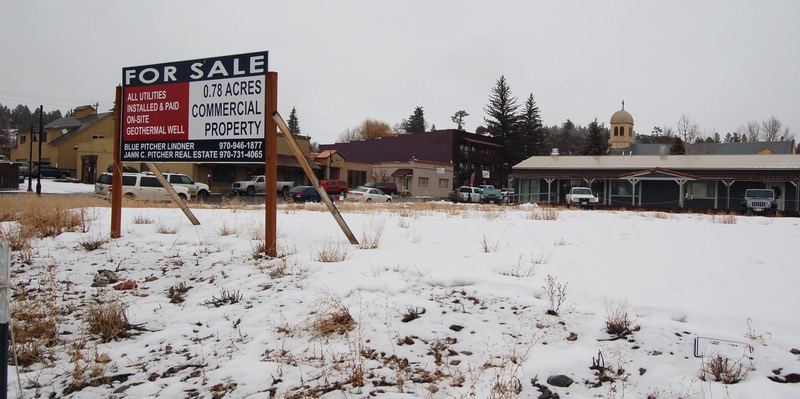
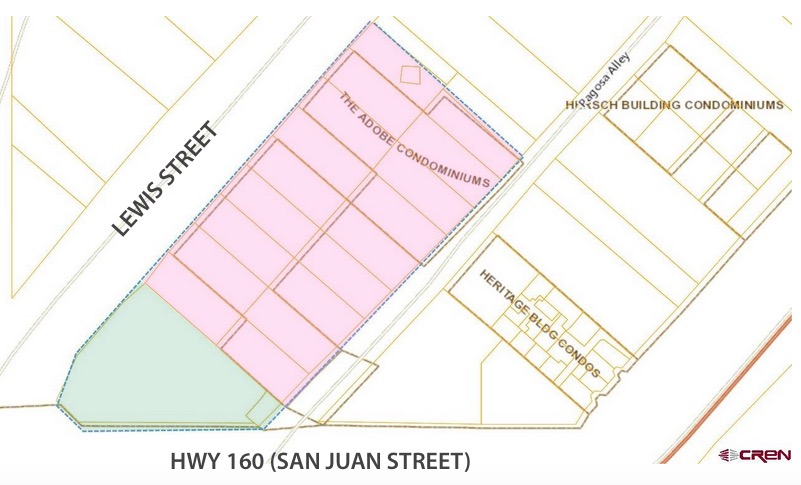
Would we be happy giving up Bell Tower Park, to benefit a developer’s profit margin on an adjacent private property?
Would such a donation benefit the community as a whole?
I’m asking these questions specifically in the context of the other 362 “Goals” included in the updated Comprehensive Plan.
The Town of Pagosa Springs wrote and adopted its first Comprehensive Plan in 2006, following the formation of a community advisory committee and a number of public meetings about the town’s future. The general idea of a Comp Plan is, I believe, to guide a town government as it makes rules and regulations, as it writes grants and as it spends tax revenues, so that we hopefully end up — at some point in the future — with a community that functions at its highest potential. The 2006 version of the Comp Plan was a noble attempt at guiding Town Council decisions — between 2006 and 2018, when an updated version was finally approved.
Some wise people have suggested that a plan is nothing, in itself, while ‘planning’ is everything. This may be especially true if you are trying to plan the future for an entire community.

A few things happened to the town between 2006 and 2018. And a few things didn’t happen.
Two things that didn’t happen:
1. We didn’t build enough workforce housing, and
2. We didn’t attract more than a couple of businesses that consistently paid decent wages.
(There were other things that didn’t happen, but I mention these two as particularly important to the overall vitality of the town.)
Three things that did happen:
1. Our local governments spent in excess of $20 million promoting tourism and building recreational amenities, and
2. Our local governments allowed perhaps 20% of the available residential housing to be converted into vacation rentals, and
3. We built parking lots.
The size of the parking lots, within the Town limits, is specified in the 279-page Land Use and Development Code. For example, the Walmart store that opened in 2015 used a significant portion of their property for an enormous parking lot. Here’s a satellite image (generated by Google, I assume) that I found on the Archuleta County Assessor’s website:
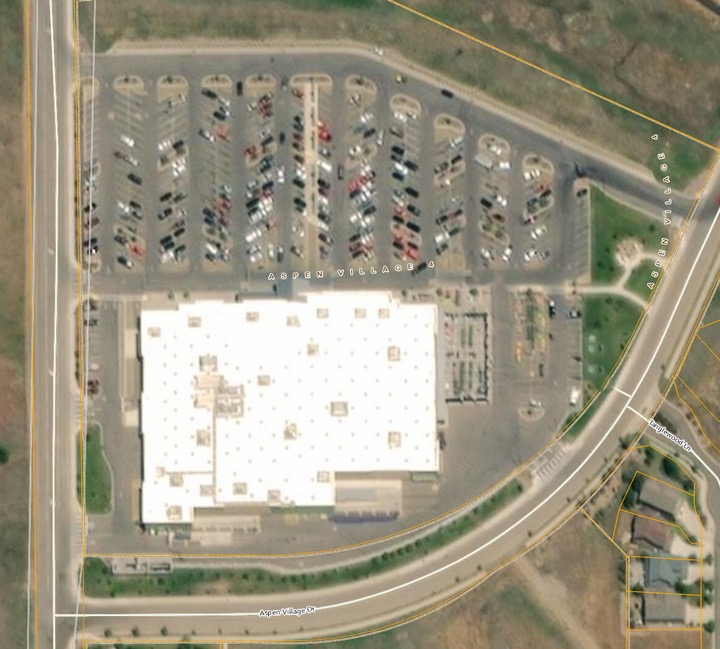
About 2.2 acres of the 10.6-acre parcel is actual retail space… leaving about 8.4 acres for parking, access and required ‘open space and landscaping.’ The parking alone accounts for 4.7 acres… more than twice the size of store itself. I’m not sure what time of day this satellite photo was taken. Some time during the daylight hours, obviously. It looks to me like maybe a third of the total parking slots are occupied.
This next image is the Pagosa Springs Medical Center:
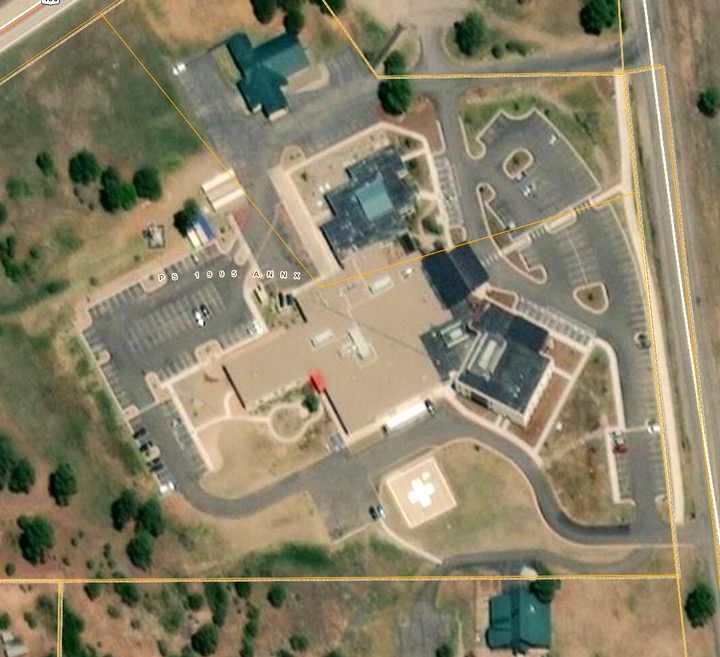
The mostly-single-story Medical Center itself measures about 1.5 acres. Parking, access and landscaping occupy 5.7 acres… more than three times the acreage of the actual buildings. Again, I’m not sure at what time of day this satellite image was taken. I count a total of 17 vehicles in the various parking lots.
Here we have another newly developed site, built within the past ten years: the Tractor Supply store at the east end of town. Another seriously under-utilized parking lot. Retail space (counting indoor and outdoor products) is about 0.9 acres. Parking, access, and landscaping take up about 2.1 acres.
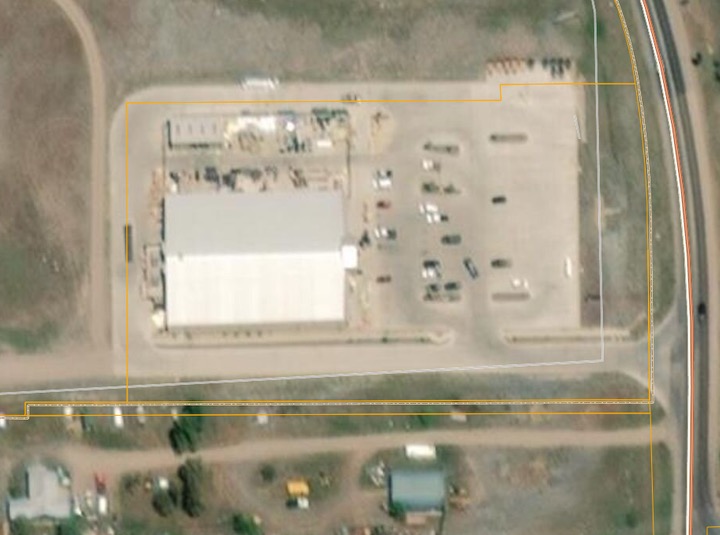
Please note that all the buildings I’ve included thus far are one-story structures, except for the newest office building at the Medical Center. I assume that a two-story Walmart or Tractor Supply taking up the same retail acreage would need a parking lot about twice as big as what we have now? That’s just my assumption, because the LUDC parking lot requirements are based on square footage and type of use.
We will again mention that the Town government specifies how much parking a business or residential development must provide, as defined in hard numbers in the LUDC, and in a conceptual form in the Comprehensive Plan. It’s not left up to the developer to determine how big a parking lot they believe they need (unless they want to exceed the Town specs, which I can’t say I’ve ever seen happen.) If the parking lot ends up less than half full, for 365 days of the year… well… that’s the price you pay for wanting to build in Pagosa Springs.
But then we have Catalytic Project #1. The vacant lot left behind by the Adobe Building fire… and the adjacent Bell Tower Park. A total of approximately 1 acre of land; the private property occupies about 0.78 acres.
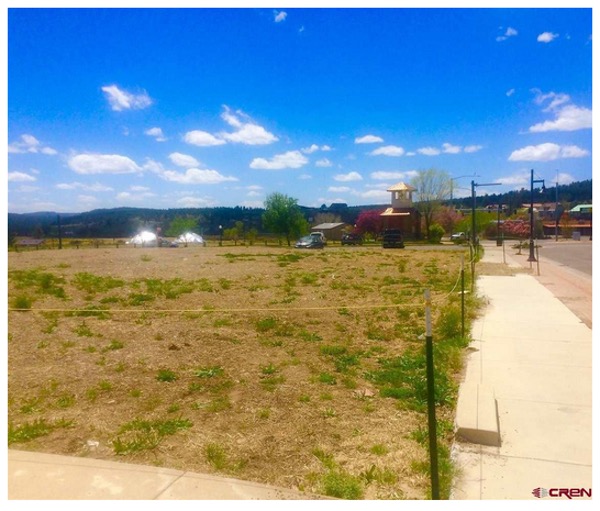
The Old Adobe was a two story building, originally built as The Arlington Hotel in about 1910. The building was also known as ‘Los Baños’ for part of its existence. When I arrived in Pagosa in 1993, it was most often referred to as ‘The Bear Creek’ — since the Bear Creek Saloon occupied most of the bottom floor. Below is the satellite view of the now-vacant parcel. The tan area — the footprint of the old Adobe — measures about 0.35 acres. That’s about 15,000 square feet. If a developer were to build a two-story structure on the exact same footprint, we’re looking at about 30,000 square feet of space. According to my reading of the LUDC, a new office building measuring 30,000 square feet would need a parking lot sized for 100 vehicles.
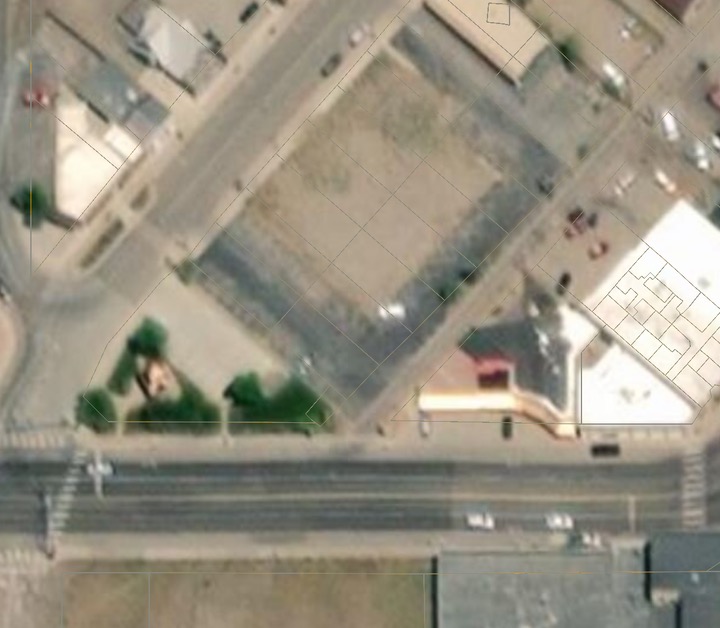
I am assuming that the parcel shown in the image above could never accommodate a parking lot big enough for 100 vehicles… even if the public donated the Bell Tower Park.
So I don’t know what to think. Do we have a parking problem in Pagosa? I don’t believe we do… except maybe inside the pages of the LUDC.
